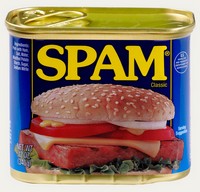 I received an interesting unsolicited email this morning from Neil. It caught me off-guard whilst downing my first triple espresso of the day.
I received an interesting unsolicited email this morning from Neil. It caught me off-guard whilst downing my first triple espresso of the day.
It was instantly engaging as it didn’t look like commercial grade spam, which usually gets insta-deleted if the spam filter hasn’t already done its job. It looked like a normal email from someone I knew. Everyone knows at least one Neil right?
It started so well. Lots of white space told my brain even before I got past the nice informal greeting that I was going to read this. The first sentence was perfect. I was hooked. There’s no way I wasn’t going to finish this one.
Hi Jon
When it comes to creating powerful internal communications, we make the complicated very simple.
So we will keep this short.
Line three could have been glorious if Neil had avoided the corporate ‘we’ and simply said “So I will keep this short”. It’s not just me; there’s a few of us out there who find the ‘corporate we’ troublesome. Anyway, I was still fully on-board at that point.
Then bang. Neil hit the iceberg.
tbp! offer a compelling blend of writing and design expertise that delivers unexpected but relevant creative solutions through all media channels.
Does anyone else see the irony of claiming writing and design expertise, as well as the ability to make ‘complicated very simple’ – and then beginning a sentence with tbp! ?
Try writing it. Those 4 simple characters take 10 keystrokes (and two hands!) to bold, italicize, and underline, before going back to the front of the word to replace the capital ‘T’ with a small “t”.
Please don’t think I’m passing judgment on a bunch of fellow communications professionals that I have never met before. I’m sure they have a long rosta of very satisfied clients and are no doubt great writers and designers.
And I’m not mocking Neil, I merely used his name as it is on the email and it works nicely as a short, uncomplicated literary device in the context of this story.
In fact, to reinforce this point I dropped him a line earlier to let him know I’d be writing this post, and he’s a lovely chap. He even had the decency to spot a typo on my LinkedIn profile, where many years ago I’d erroneously and somewhat ironically written !5 instead of 15.
The final irony is that if the offending tbp! had been replaced with a ‘corporate we’, I’d never have got to write this story, and Neil and I would never have connected. So maybe after all, that was tbp!’s master plan and I fell for it, hook line and sinker…





